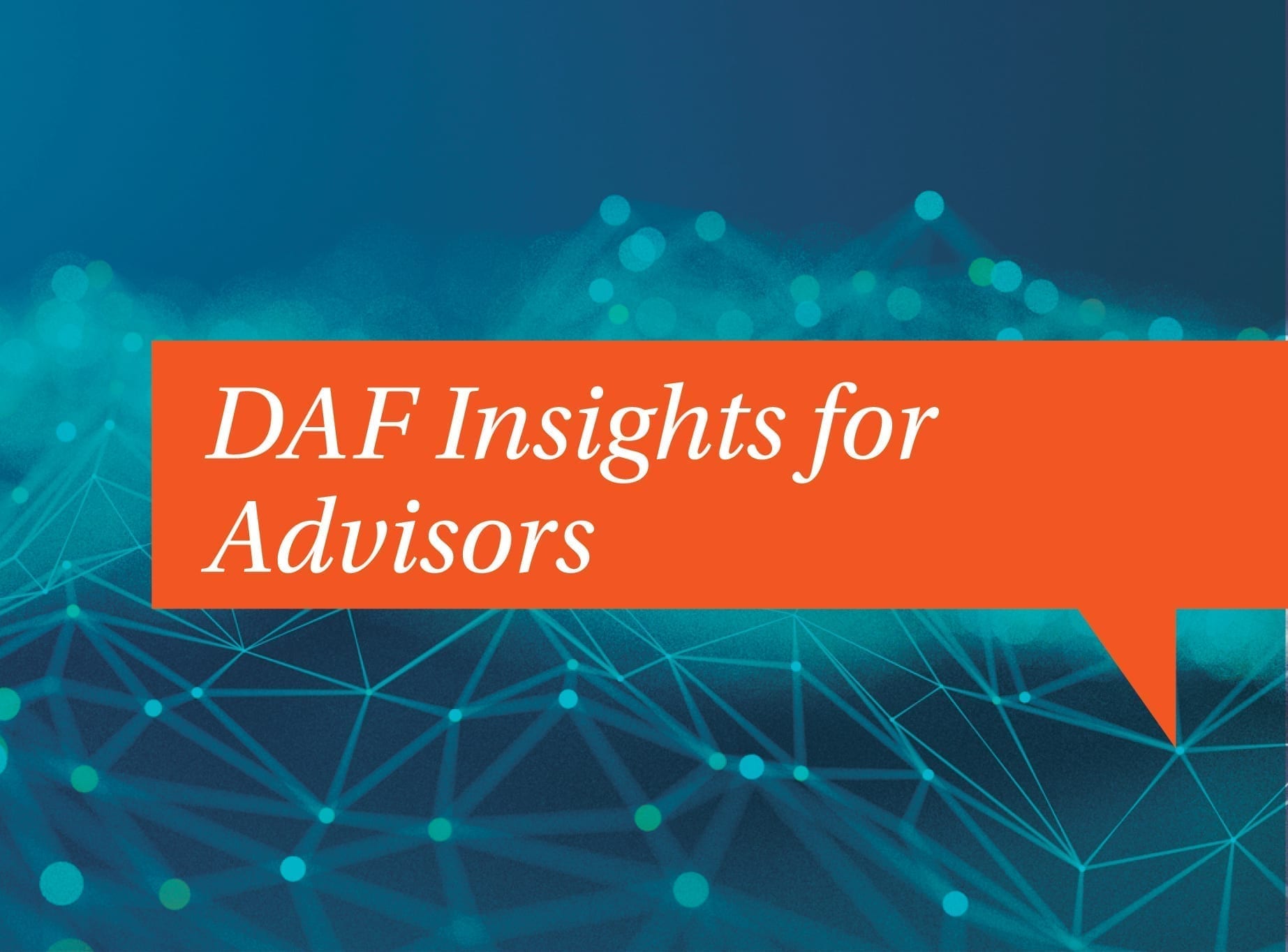DAF Insights: Three Reasons You Should Talk to Clients about Impact Investing with Their DAFs

At National Philanthropic Trust, we are proud to announce a new offering in our impact investing platform, which allows donors to align their investments with their grantmaking goals. Developed in partnership with CapShift, an industry-leading provider of impact investing solutions, our platform now offers access to a curated menu of private impact investments in addition to four thematic portfolio solutions.
Impact investing encompasses many strategies addressing a wide range of social and environmental issues. NPT is pleased to offer this three-part series which will provide an overview of the impact investing landscape and will help you have better, more productive client meetings.
Take a minute to reflect on this statistic: More than one-quarter (26 percent) of all professionally managed assets in the U.S. are in sustainable, responsible and impact investments, according to the most recent report of industry group US SIF. This amounts to $12 trillion in assets—a 38% increase in just two years.
Given its rising popularity, impact investing—in its various forms—is something your clients may want to discuss with you. If they haven’t yet raised the subject with you, it’s a good idea to take the lead. Here’s why:
Impact investing makes good sense financially. There’s abundant evidence that companies that prioritize environmental, social and governance (ESG) issues generate better long-term financial performance, according to an aggregated report of more than 2,000 studies. Morningstar found that 73% of its 56 ESG-screened indexes outperformed their non-ESG equivalents since inception. Not only that, the ESG funds showed less exposure to risk factors like volatility. It’s easy to understand why: Companies that are good environmental stewards not only help the planet but also avoid damaging and costly environmental incidents. Similarly, companies that treat workers well provide greater benefit to society while also attracting and retaining the best employees. Bottom line: Just as you would introduce any investment that is potentially lower risk and higher return, you should discuss impact investments with clients.
It can help you connect with the next generation. As much as $68 trillion will move between generations during the next 25 years, according to Cerulli Associates. Advisors who connect with clients’ beneficiaries are more likely to end up managing family assets across generations. A key way to forge bonds with younger generations is to provide relevant advice in areas that interest them, and an overwhelming number of millennials—95 percent, according to a Morgan Stanley survey—are interested in sustainable investing. In fact, two-thirds of millennials have already invested in companies that target environmental or social outcomes, compared with 52% of the general population.
It’s an avenue into the conversation about values—and a chance to help clients meet their philanthropic goals. As robo-advisors grow and the advisory space in general becomes more automated, you can set yourself apart by having deeper and more meaningful conversations with clients about what matters to them. For clients that are philanthropically minded, a conversation about impact isn’t just smart—it’s critical. Many clients want to pursue their charitable cause using every tool available. At the very least, they don’t want their investments to work at cross purposes with their charitable mission. Clients who have never pursued impact investing may find that it makes sense to integrate it with their philanthropy. In some cases, clients with donor-advised funds may have set aside two or more years of giving in their charitable accounts. By investing for impact, they can put those assets to work immediately.
If you would like more information or help getting started in impact investing, please call National Philanthropic Trust at (888) 878-7900 or email us at npt@nptrust.org. You can also learn more by following our series on impact investing.

